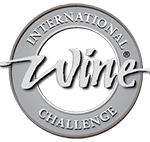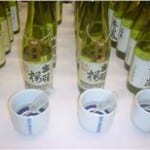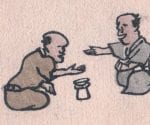In May and early June, there was a spate of tasting competitions held in and out of Japan, many of which are significant in both scale, and potential impact. These competitions have usually hundreds of sake that are blindly judged by dozens of judges, and the results are made public. This happens across several media, both electronic and printed, and several of the organizations provide stickers for the producers to further promote the winning sake.
While such results are not the only way to select sake, and in fact are arguably not even close to the best way, these contests do an outstanding job of at least one thing: they draw attention to sake as a super-premium beverage worthy of assessing at the highest level by experienced professionals.
Let us look at four such contests (in the chronological order in which they took place), with a bit of information about each, and links to the results as well.
“The Nationals” in Japan
In May, the sake industry held the 106th (!) running of the Zenkoku Shinshu Kampyoukai, or “National New Sake Tasting Competition,” which has the official English translation of the “Japan Sake Awards.” While my unofficial translation above is certainly more descriptive, the nature of the contest should be clear.
Interestingly, at 106, it is the longest running competition of its kind anywhere in the world. For all but the last few of those it was run by the government itself with the goal having always been helping brewers improve their skills. The last few years, the body running it has been semi-privatized.
Those interested can find more information in the archives of this newsletter (which go back to 1999!), in particular in the June or July editions for each year.
The sake submitted to this contest by the brewers is not stuff you can normally buy, but rather daiginjo or junmai daiginjo made specifically for this contest. It is brewed to have a minimum of faults, but still seem unique and special. I often refer to it as “daiginjo on steroids.”
Just about two-thirds of Japan’s sakagura submitted an entry to the contest, for a total of 850 entries. Each company is allowed to submit one sake per brewing license, i.e. one per brewing facility owned. Some larger companies own more than one facility so they would be permitted one for each.
Almost all of it is not junmai because using the added-alcohol step brings out more aromas and flavors. But this year, 163 of the 850 submissions were junmai, up seven submissions from a year ago. It seems that at least a few more brewers are interested in trying to win with junmai sake.
Sake is tasted blind in round one, and about half make it to round two. They are then tasted blind again, and about half of these will be designated as gold, the rest that made it into the second round are designated as prize-winners (the term “silver” is not used, although the gist is the same).
While the contest is extremely prestigious within the sake industry, it is not that commonly used in marketing as the average consumer has no idea this contest even exists.
For the eighth time in twelve years, and sixth in a row, Fukushima Prefecture won more golds than any other prefecture. This was a new record, as no prefecture has ever won the most golds for six years in a row. Just as interestingly, Hyogo Prefecture (wherein sits Nada, the Mecca of sake brewing) was number two. As has been the case for the past decade, the entire Tohoku region did very, very well.
While the sake submitted is not usually sake destined for the market, the flavors, aromas, styles and leading prefectures are a harbinger of where sake is currently headed. Therein lies the contest’s appeal.
There is so much to be said about this competition: the changes over the years, the politics, the history, the records, and more. Much of that can be dug up in the archives of this newsletter, but more importantly it seems as though amidst today’s sake popularity, more brewers and consumers as well are showing an interest in this historically and culturally significant competition.
You can see the results in Japanese here and in English here.
IWC in Japan
 From May 13th to May 16th, the 10th International Wine Challenge 2018 Sake Competition was held in Yamagata Prefecture. This was the third time the event was held in Japan, away from its usual home of London.
From May 13th to May 16th, the 10th International Wine Challenge 2018 Sake Competition was held in Yamagata Prefecture. This was the third time the event was held in Japan, away from its usual home of London.
This contest sees sake judged in panels, with discussion amongst the judges to ensure general consensus. It is a great way to help raise more experienced sake judges all over the world. Also, the results are marketed wonderfully and glamorously, furthering sake promotion efforts.
Sake is judged in one of nine categories: futsuu-shu (regular sake, i.e. non-premium sake), honjozo-shu, junmai-shu, ginjo-shu, junmai ginjo-shu, daiginjo-shu, junmai daiginjo-shu, koshu (aged sake) and sparkling sake. That is a lot of tasting, and it took us three and a half days to work through it all in the multiple rounds that were called for. Judges are encouraged to judge a sake as a representative of the grade in which it was submitted, meaning it cannot be overly ostentatious if not of a grade that is expected to demonstrate that. (In other words, super fruity honjozo, for example, would get dinged for that character.)
Gold, Silver, and Bronze medals are awarded, with sake that is good but not quite of medal quality receiving a Commended award. Producers that choose to can affix little labels to their bottles advertising those accolades.
Complete results in Japanese can be found here: http://www.sakesamurai.jp/iwc18_medal.html
The list of all medal winners and commended sake can be found in English here : www.internationalwinechallenge.com/canopy/search.php#tabs1-sake. If you click on “Search for a Sake” the entire list of Medal and Commended sake comes up, in alphabetical order.
Also, the trophy winners (only; not all medal winners) for each category are here in English (near the bottom of the page – because the best is saved for last!): https://www.internationalwinechallenge.com/trophy-results-2018.html
Hasegawa Saketen “Sake Competition”
 Next – at least chronologically – is the Hasegawa Saketen “Sake Competiton.” Hasegawa Saketen is a large and well known sake distributor and retailer in Japan that has for ten years or so ran a sake competition of its own. The sake submitted is all market sake – nothing specially brewed. And the judges are industry people – brewers, toji, owners, and folks like myself. There are two rounds held two days apart.
Next – at least chronologically – is the Hasegawa Saketen “Sake Competiton.” Hasegawa Saketen is a large and well known sake distributor and retailer in Japan that has for ten years or so ran a sake competition of its own. The sake submitted is all market sake – nothing specially brewed. And the judges are industry people – brewers, toji, owners, and folks like myself. There are two rounds held two days apart.
Just like the Japan Sake Awards mentioned above, each judge assesses alone, with no input or influence permitted, and no discussion amongst judges either.
This year, it was held right after the IWC mentioned above. That was challenging. Furthermore, in the second round there are over 500 sake to be tasted – by each judge – in one day. It’s a marathon.
Yet, at the same time, the contest is on the up-and-up, and worthwhile to participate in, and the results are useful as well. Interestingly, the same sake seem to be popping up at the top each year, with a few changing in and out. And these are mostly well known, prized sake. The results of the blind-tasting contest, then, seem to uphold the popularity of those sake.
The gold medal results in English are here: https://sakecompetition.com/?page_id=1647 Poking around the English header will lead to more about the contest, and also, there is plenty about the competition on that site in Japanese as well.
US National Sake Appraisal
 Last but by no means least is the 2018 US National Sake Appraisal, held in June this year (although usually it is held in August). This contest takes place in Hawaii with a mix of judges, some from Japan and some from the US and other countries. The judges from Japan are from the National Research Institute of Brewing, and various prefectures around Japan. All are quite esteemed.
Last but by no means least is the 2018 US National Sake Appraisal, held in June this year (although usually it is held in August). This contest takes place in Hawaii with a mix of judges, some from Japan and some from the US and other countries. The judges from Japan are from the National Research Institute of Brewing, and various prefectures around Japan. All are quite esteemed.
This judging too takes place just as it does in the Japan Sake Awards; in other words, each judge tastes on his or her own, with no discussion. Results are tallied as an average of all judges’ scores.
The classifications for judging are a bit different, and are more focused on the milling rate than whether or not they are junmai style or not. So Junmai is one grouping, Jumai Ginjo and (non-junmai, i.e. added alcohol) ginjo are together as another group, Daiginjo A – in which the milling is 40% or less (i.e. 35%, 38%), and Daiginjo B for which the milling is between 50% and 40%. This is certainly a slightly different take, and a very valid one for sure.
These sake are then taken on a road show, being presented at the Joy of Sake events which this year are to be held in New York (just finished!), Honolulu in July, London in September and Tokyo in November. If you are anywhere near one of these cities at those times, be sure to check the party out. The results have been made public, and you can see the top winner in each category, and the medal winners for each as well here: http://www.sakeappraisal.org/en/appraisal-2018.html
~~~
There are other competitions too, and there will be more popping up. Of this I am quite sure. These are just the most visible. The results are extremely interesting, and if you want to make things even more interesting, take the time to look across the results of each of the above and see what names keep popping up; that tells us a lot. I’m just sayin’.
After having judged in three out of these four this year, and all of them at one time or another, there are a couple of thoughts about these competitions.
First and foremost, they all attract attention to quality sake, and the fact that sake is worthy of being assessed by beverage professionals from around the world. This is an unequivocally good thing!
In truth, though, only certain styles or types of sake will do well through. Those that do are, of course, worthy and deserving for sure. But in these contests, sake is tasted on its own, with no food, no friends, no ambiance suffusing the situation. Sake that has any semblance of quirky or idiosyncratic character will not likely win a medal in any of these. Often, such characteristics can be extremely appealing. But sake that is not a part of the orthodox clean light ginjo borg does not have much of a chance. And it is what it is.
In the end, it’s a good tradeoff. The sake that receive awards are all great sake, and the contests draw attention to sake. That’s enough, at least for now, methinks.
~~~~~~~~~~~~~~~~~~~~~~~~~~~~~~~~~~~~~~~~~~~~~~~~~~~~~~~~~~~~~
From Monday August 13 to Wednesday August 15, 2018, I will hold the 30th North American running of the Sake Professional Course at at the Miami Culinary Institute in Miami, Florida. The course will run 9-5 all three days. The cost for the course, all materials, and the right to take the exam for Certified Sake Professional certification is $899. Learn more here. Interested? Please email me at sakeguy@gol.com .






